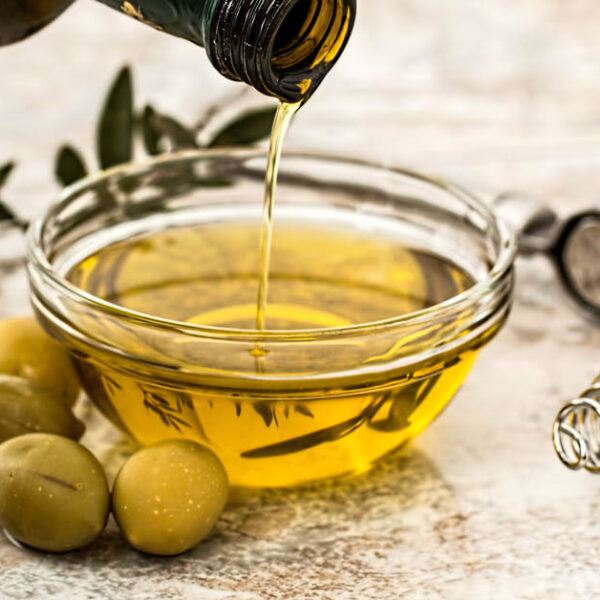Diabetes types, according to WHO, can classify into two major categories: type 1 diabetes (T1DM) and type 2 diabetes (T2DM). The leading cause of both types of diabetes is abnormal glucose homeostasis.
Diabetes is a metabolic disorder mainly characterized by polyuria, polydipsia, polyphagia, weight loss, blurry vision due to insulin deficiency or reduced biological function of insulin, or both.
Thomas Willis coined the term diabetes mellitus. ‘Diabetes’ is a Greek word meaning – ‘siphon, to pass through’ or ‘polyuria,’ and ‘Mellitus’ is a Latin word meaning ‘honeyed’ or ‘sweet,’ which means “Flow of sugar in the urine.”
DIABETES TYPES, CAUSE, and PREVENTION:
1. TYPE 1 (INSULIN-DEPENDENT DIABETES MELLITUS):
Insulin-dependent diabetes mellitus is due to the destruction of ß cells in islets of Langerhans of the pancreas. It is also called Juvenile onset diabetes(onset most common in childhood) or Insulinopenic.
CAUSE OF TYPE 1 DIABETES:
- In type 1 DM, Autoimmune attack on ß cells by autoreactive T-cell.
- In genetically susceptible individuals, loss of tolerance to ß cells autoantigens.
- The pancreas has almost 70% of functional ß cells. Therefore, a large number of ß cells are destroyed before patients suffer from IDDM.
- In some cases, cytokines Inhibit insulin secretion. Cytokines are interleukin 1, TNF-α, TNF-β, interferon-gamma.
- Some environmental factors are also responsible for Type 1 DM, like Cow milk, Gluten, vitamin D deficiency.
PREVENTION OF TYPE 1 DIABETES:
a. Say no to Cow or Bovine Milk :
Bovine serum albumin is structurally very similar to islet p69 protein. Therefore, when your baby is fed with cow milk, the baby’s body produces antibodies against the bovine serum protein, which is very similar to a baby’s ß cells. As a result, the baby’s ß cells may be injured due to a mismatched immune response. The reason behind mismatching is– early exposure to CM results in immunization to bovine insulin, a molecule that differs structurally from human insulin in only three amino acid positions.
The whey-based hydrolyzed formula is a good alternative. A partially hydrolyzed whey protein-based infant formula supports adequate infant growth, with a daily weight gain equivalent to a standard intact protein-based formula; it is also safe for use and well-tolerated in healthy term infants.

Best reviewed Baby food:
For the UNITED STATES: Gerber Purees 2nd Foods Veggie & Fruit Variety.
For INDIA: Nestle CEREGROW
b. Breastfeed:
Babies who are extensively breastfed for a prolonged period have a lower risk of developing type 1 diabetes.
c. Gluten-diabetogenic agent:
Several studies have suggested that gluten is a diabetogenic agent. There is an association between the introduction of cereals in infancy and early beta-cell autoimmunity. In addition, pregnant women who take high amounts of gluten had double the risk of having a child with type 1 DM compared to those who ate the least gluten. Gluten is found in wheat, rye, and barley.
d. Vitamin-D:
Vitamin D deficiency is a risk factor for type 1 DM.
Source of vitamin D-
- Allow children to play in sunlight or spend time in sunlight.
- Consume fatty fish and seafood.
- Eat more mushrooms.
- Include egg yolks in your diet.
- Eat fortified foods.
- Vitamin D supplement.
e. Omega-3 fatty acid:
Omega-3 fatty acids have also been reported to play a protective role in developing Type 1 DM. helps in reducing the risk of beta-cell autoimmunity.

The Source of Omega-3 fatty acid is:
- Take fish and other seafood like- salmon, mackerel, tuna, herring.
- Eat nuts and seeds, such as flaxseed, walnuts.
- Plant oils, such as flaxseed oil, soybean oil.
- Cod liver oil.
Cod liver oil buying guide:
For INDIA: WOW Omega-3 Fish Oil Triple Strength.
For the United States: Amazing Omega Norwegian Cod Liver Oil
f. Physical activity:
Along with diet, physical activity is also very much beneficial for the prevention of diabetes. The benefit of physical activity is a healthy body, positive self-esteem, improve memory, good mental health.
Tips to make your kids physically active:
- Walk to school.
- Encourage your children to play with others in the park.
- Say no to the tv, video game, mobile, etc.
2. TYPE 2 (NON INSULIN DEPENDENT DIABETES MELITUS):
Type 2 DM is also known as Maturity onset diabetes mellitus or Non-immune dependent diabetes mellitus. Abnormal insulin secretion and insulin resistance are the factors responsible for type 2 DM.
CAUSE OF TYPE 2 DIABETES:
- The insulin receptor is unable to respond to insulin. As a result, your body is unable to use insulin.
- Insulin resistance is also accompanied by central or visceral obesity, arterial hypertension, dyslipidemia, cardiovascular disease.
- Type 2 DM is characterized by impaired insulin secretion due to B cell dysfunction, insulin resistance at peripheral receptors that leads to excessive hepatic glucose production, and abnormal fat metabolism.
- Beta-cell reduces up to 50% in a person who has long-standing diabetes.
PREVENTION OF TYPE 2 DIABETES MELLITUS:
a. Lifestyle Modificaion:
Stress is the origin of many diseases, and diabetes is one of them. Mental stress induces the secretion of the Cortisol hormone, which further elevates the blood glucose level.
Tips to improve lifestyle:
- Yoga.
- Mindfulness.
- Physically active.
- Healthy eating.
b. Diet:
Diabetes can be control and prevented by proper diet. First of all, avoid certain food groups like carbohydrates and fats.
Healthy diet tips:
- A high intake of vegetables and fruits should be encouraged.
- Grain products should mainly be unrefined, with high natural fiber content.
- Vegetable sources of fat with low saturated fat content (such as olive oil) should be preferred.
- As a source of protein, nuts, legumes, dairy products, and fish should be favored and red meat limited.
- The intake of highly processed foods (e.g., processed meat, sweetened beverages, confectionery) should be limited.
c.Physically active:
Physical activity helps in the regulation of glucose homeostasis.
Physical activity category according to steps per day:
- A sedentary person walks less than 5000 steps per day.
- Low (typical daily activity) walks 5000-7499 steps per day.
- Moderate( equivalent to 30 min moderate-intensity physical activity per day) walks 7500-9999 steps per day.
- High (equivalent to 45 min moderate-intensity physical activity per day) walks 10000-12499 steps per day.
- Very high (equivalent to more than 45 min of moderate-intensity per day) walks more than 12500 steps per day.

Tips for physical activity:
- Dancing.
- Swimming.
- Bicycling.
- Walking.
- Yoga.
- Thi-chi.
- Weight lifting.
d. Control obesity:
Obesity is one of the most critical risk factors for DM. Adipose tissue, especially the tissue surrounding internal organs (visceral fat), is today regarded as an active endocrine organ that secretes various proinflammatory adipokines that act locally and globally. Proinflammatory adipokines increased the turnover of free fatty acids, which bring on insulin resistance.
“DIABETES TYPES” CONCLUSION:
The Cases of Type 1 and Type 2 diabetes are overgrowing worldwide. WHO estimated there were 422 million adults with diabetes worldwide in 2014. In addition, the prevalence of type 2 diabetes mellitus is growing more rapidly.



Great info…
Thanks .
The point about bovine milk was amazing..
Thanks.
Hi there, for all time i used to check weblog posts here in the early hours in the break of day, as i love to learn more and more.
Thank you for your sharing. I am worried that I lack creative ideas. It is your article that makes me full of hope. Thank you. But, I have a question, can you help me?